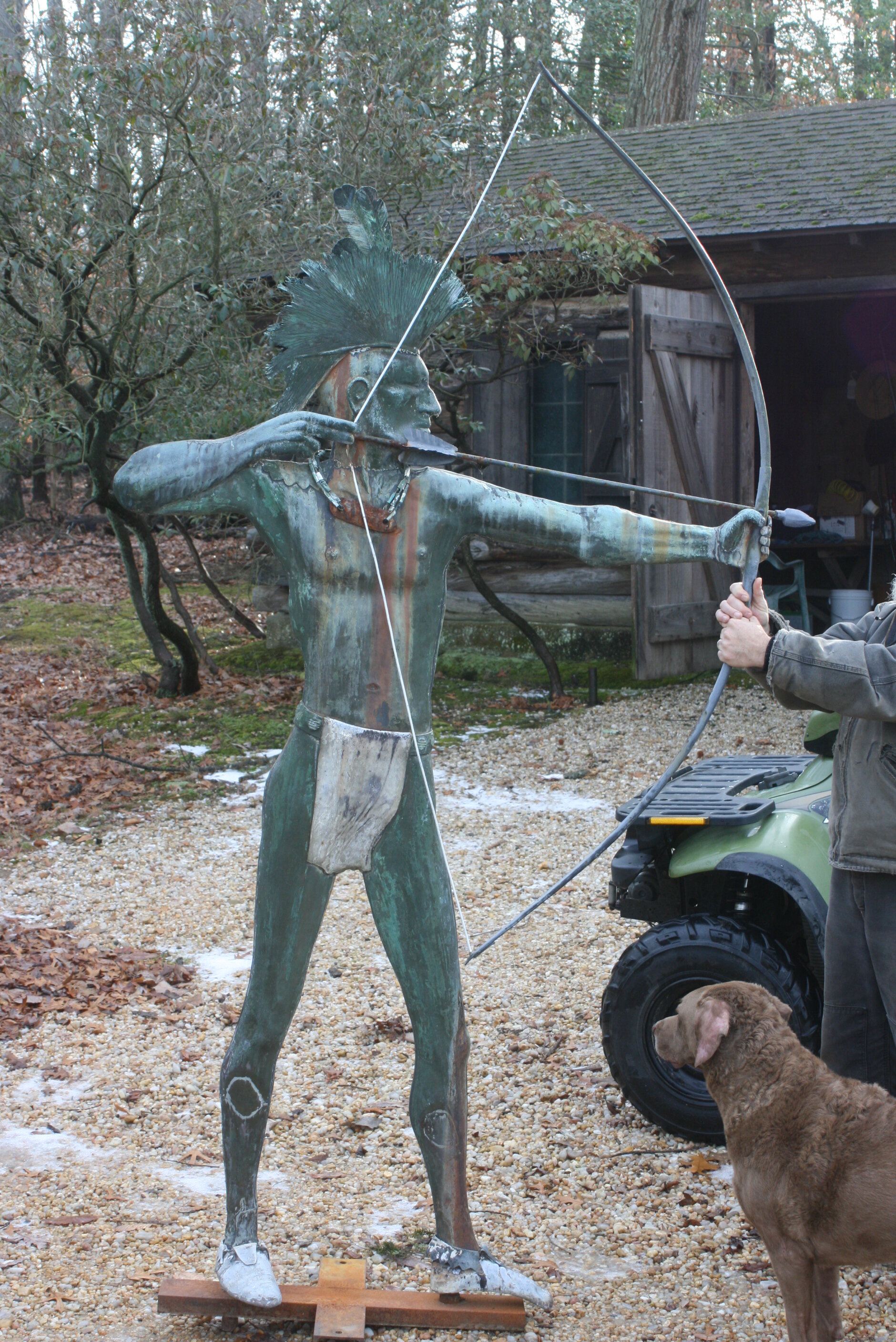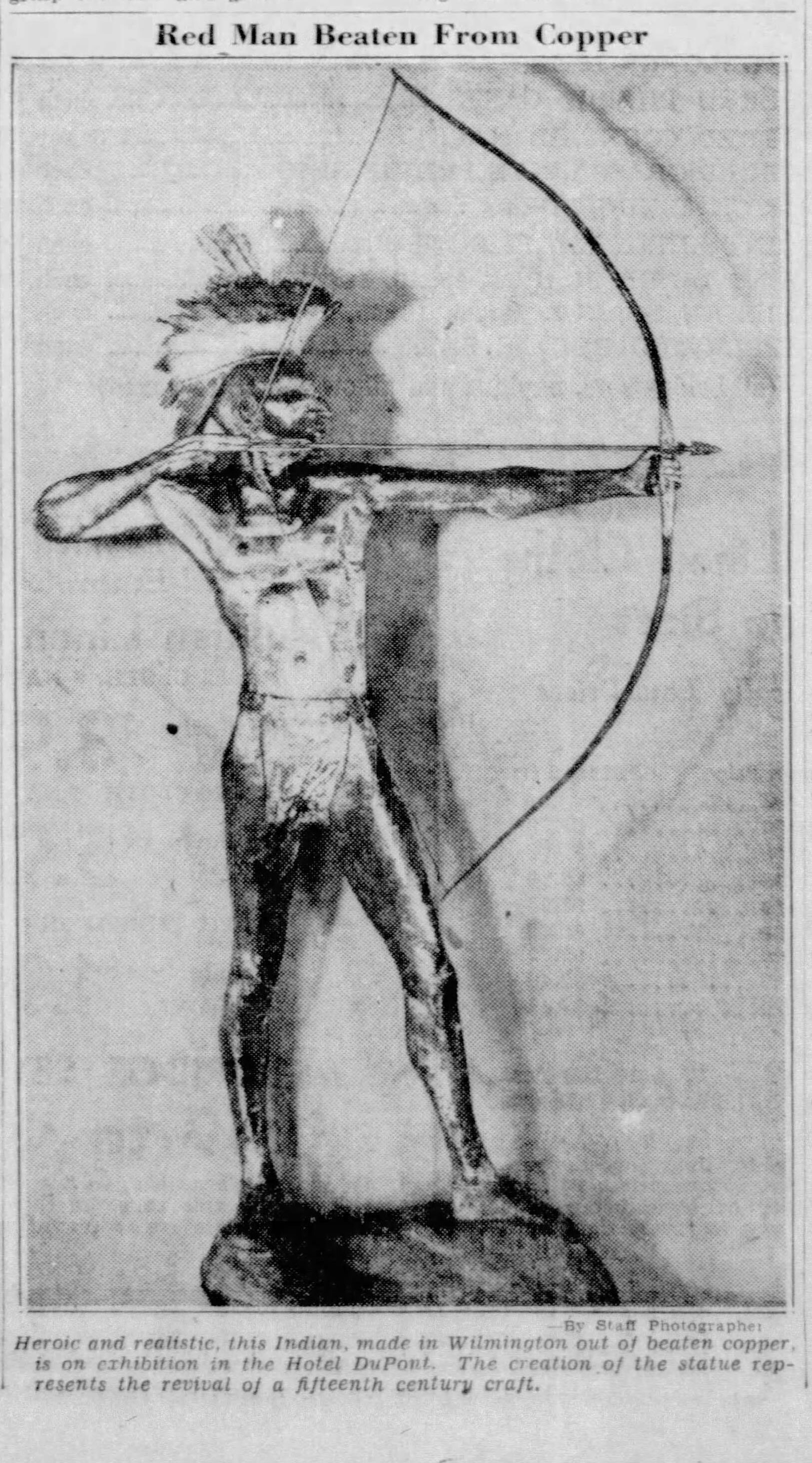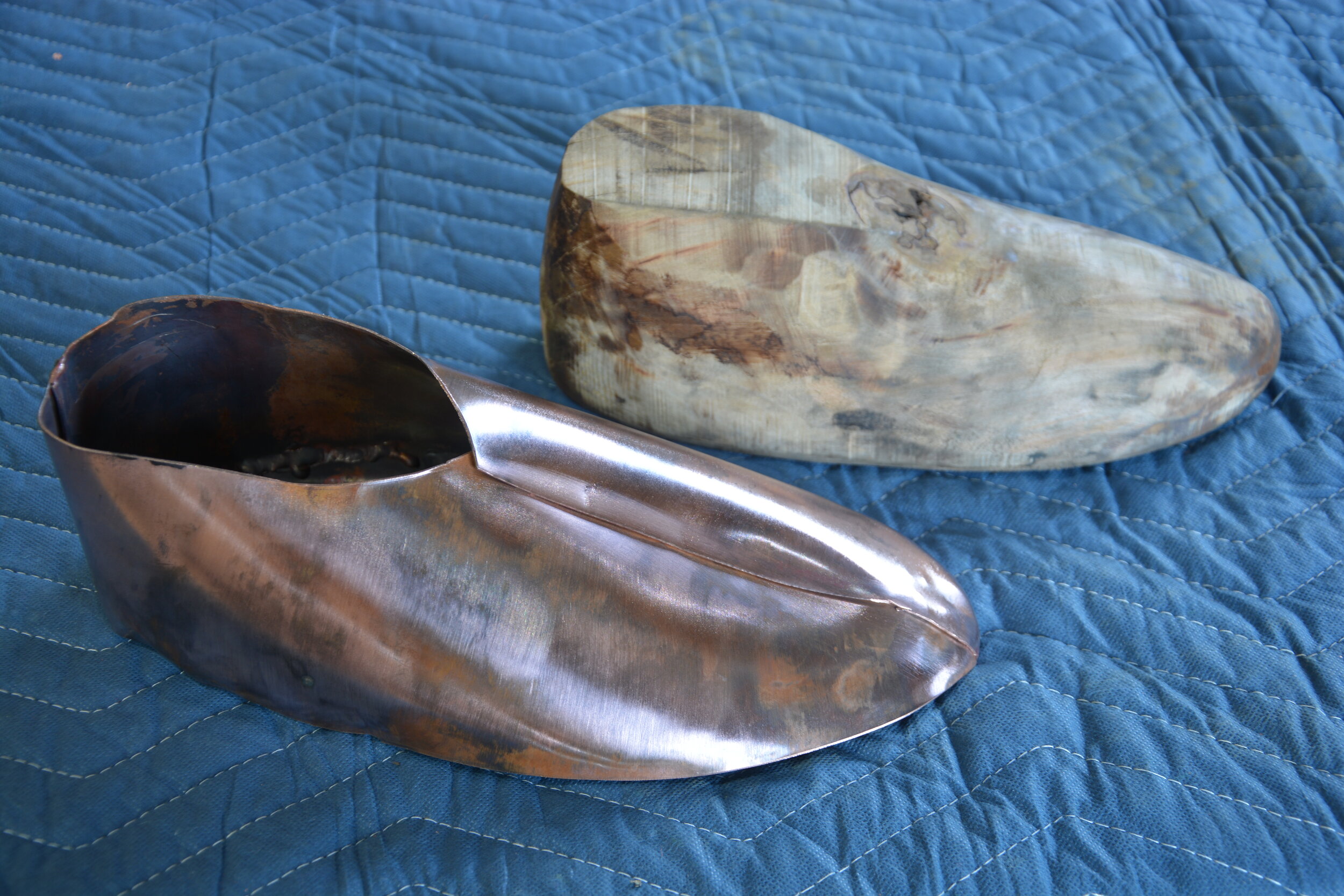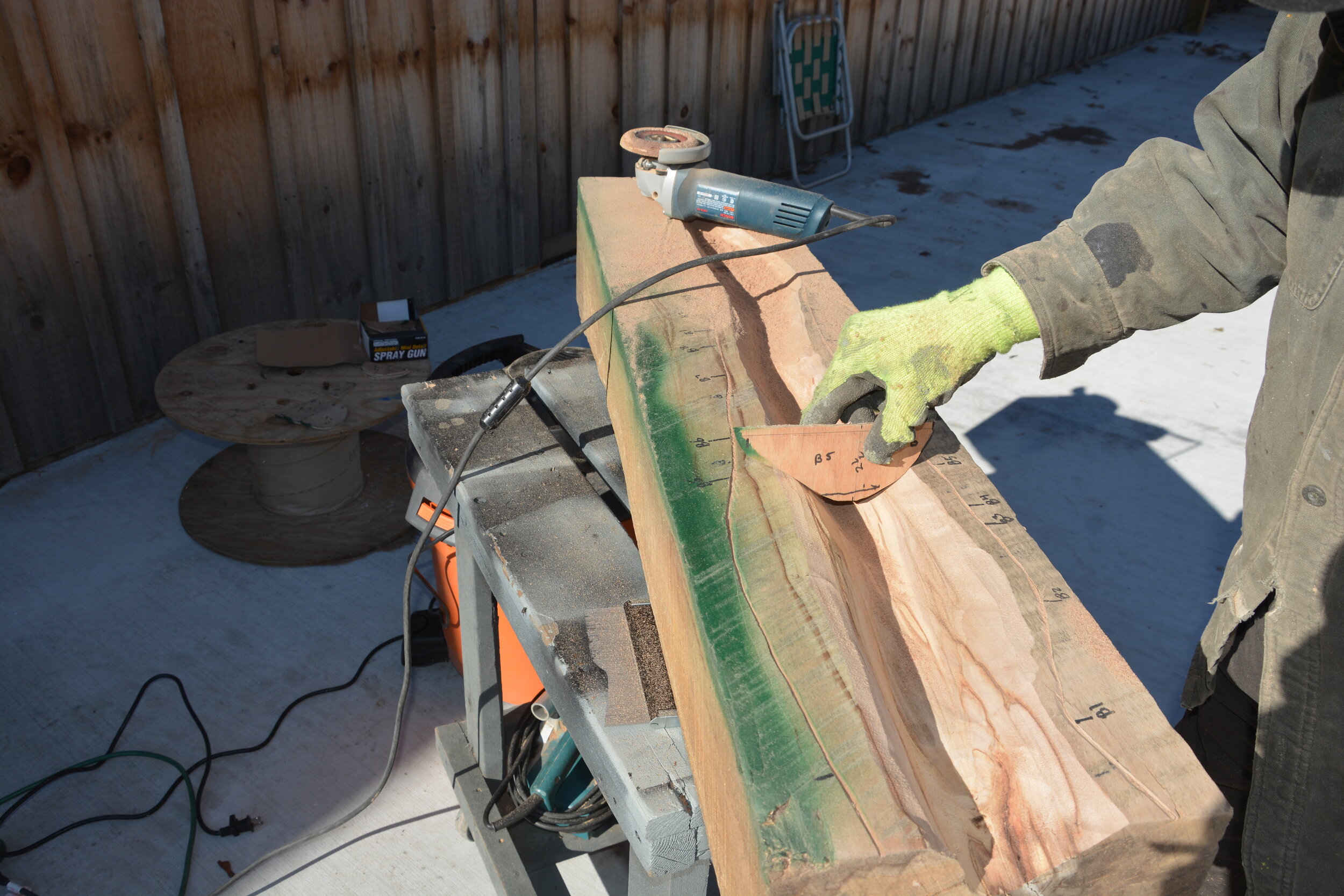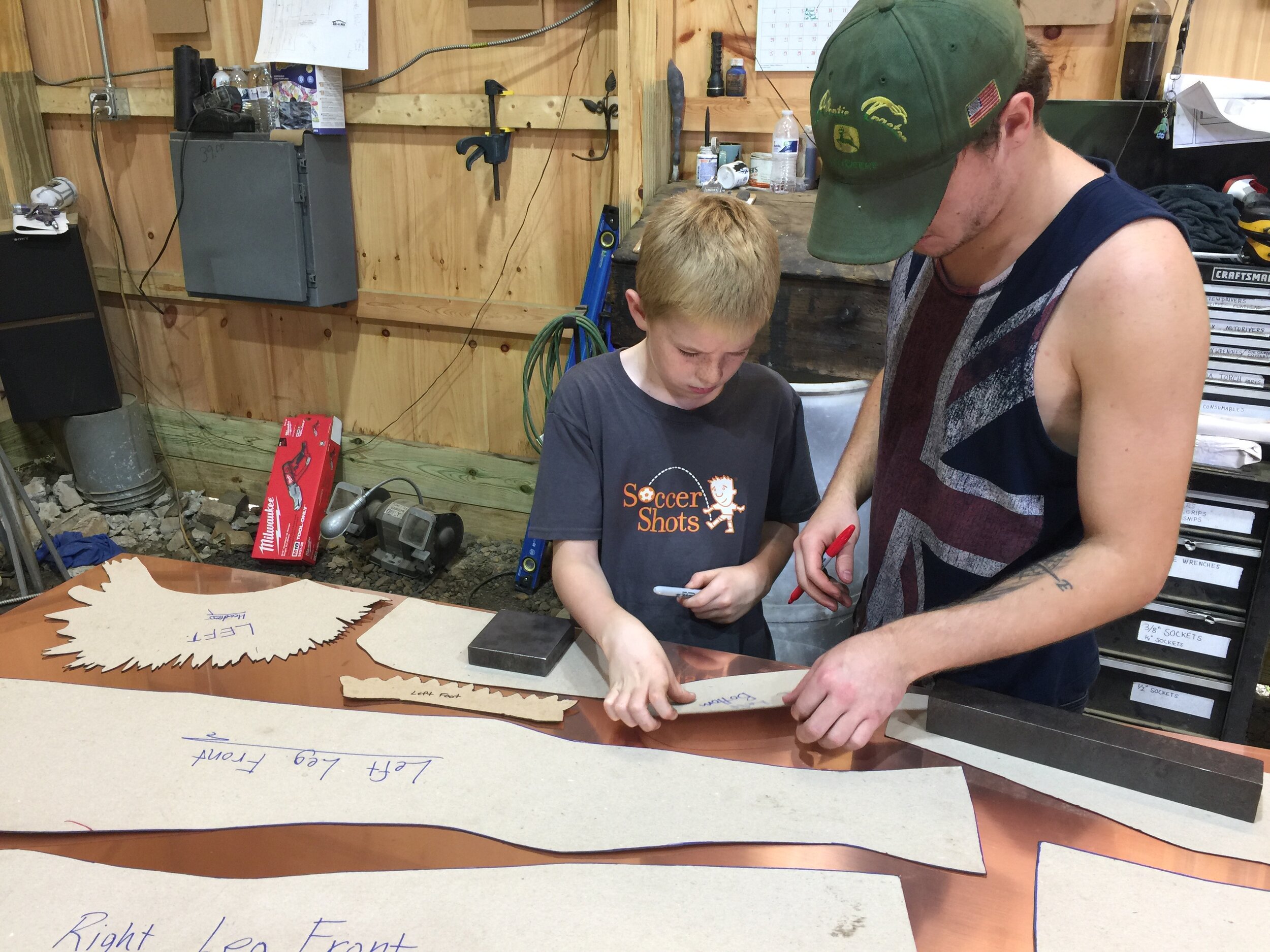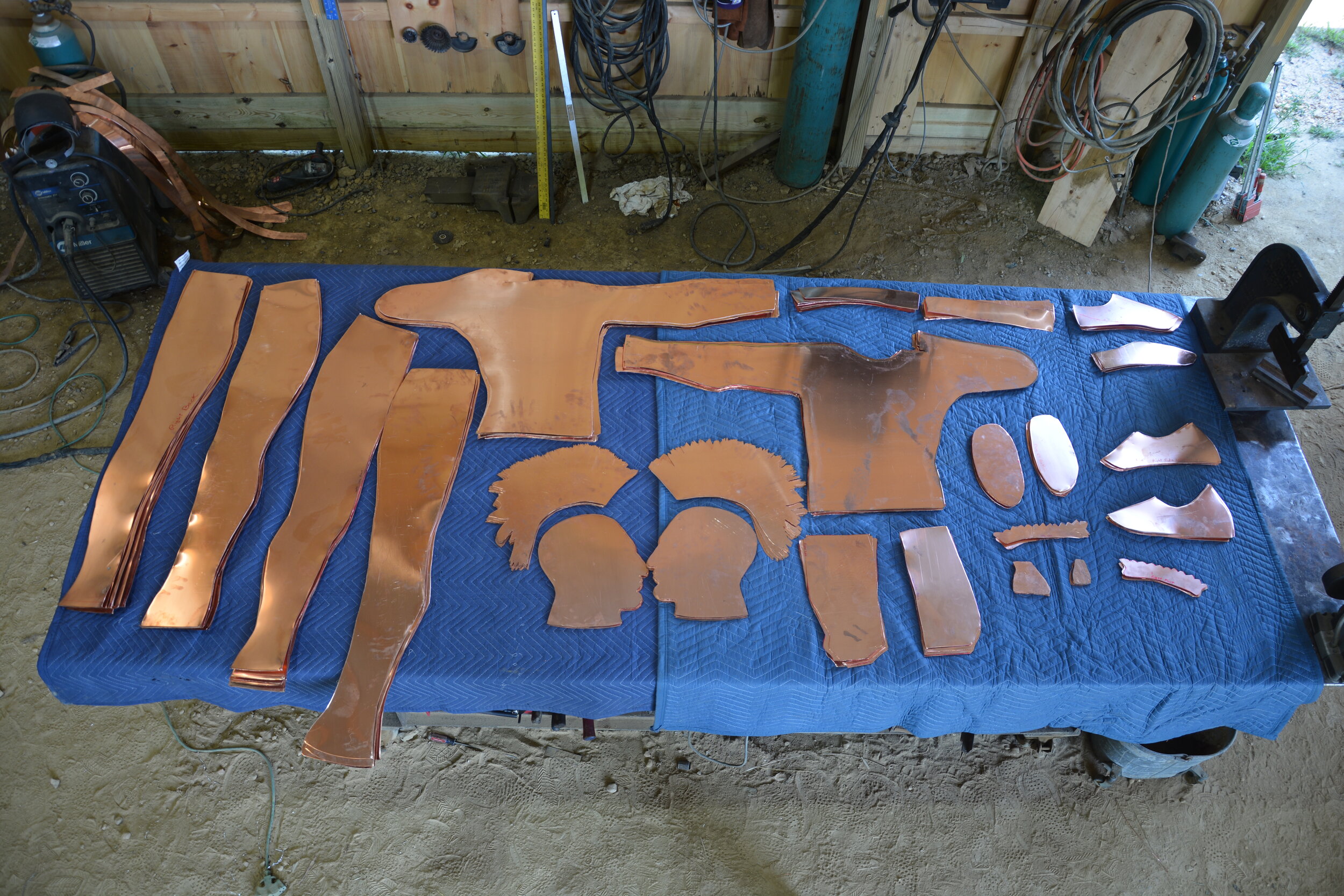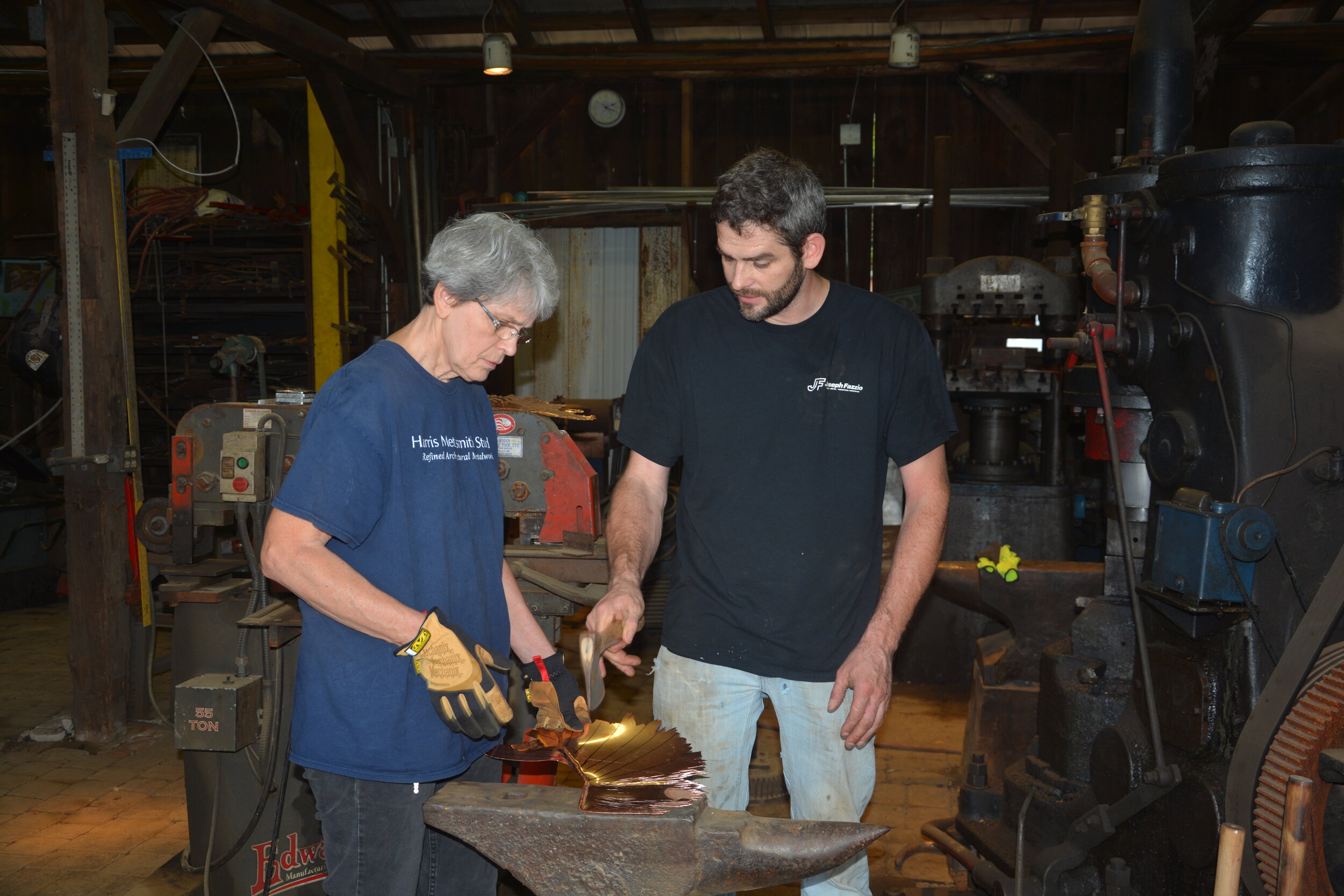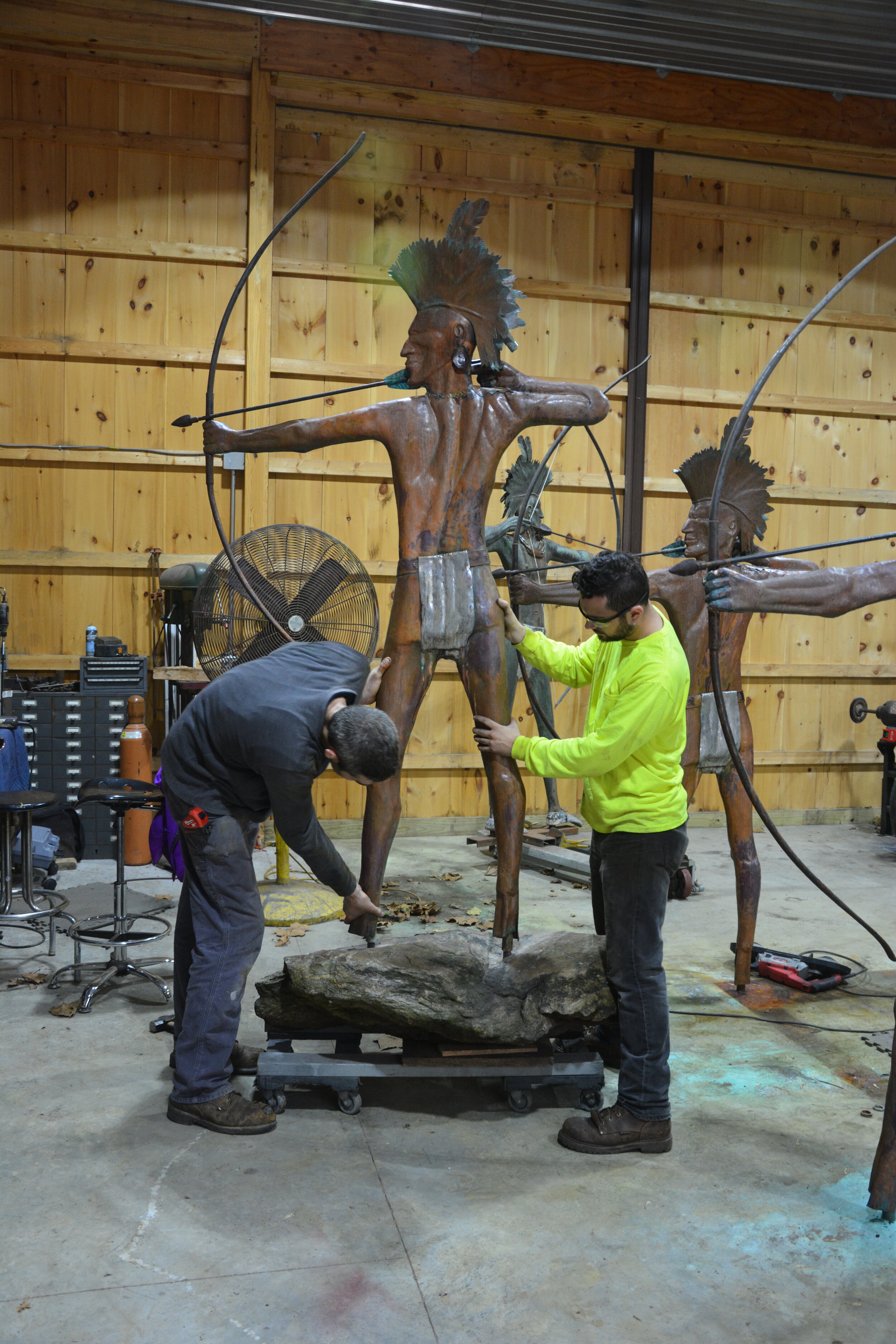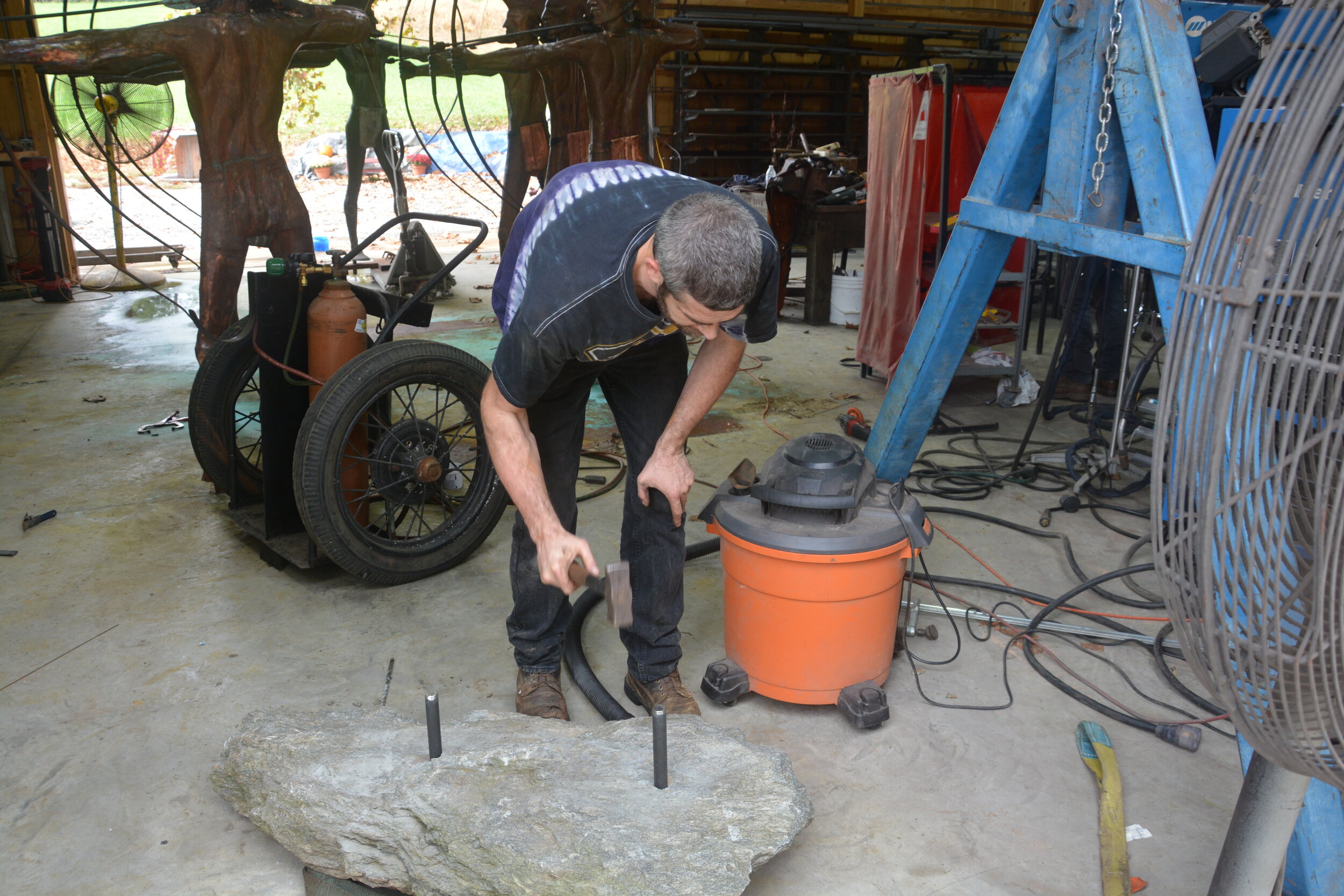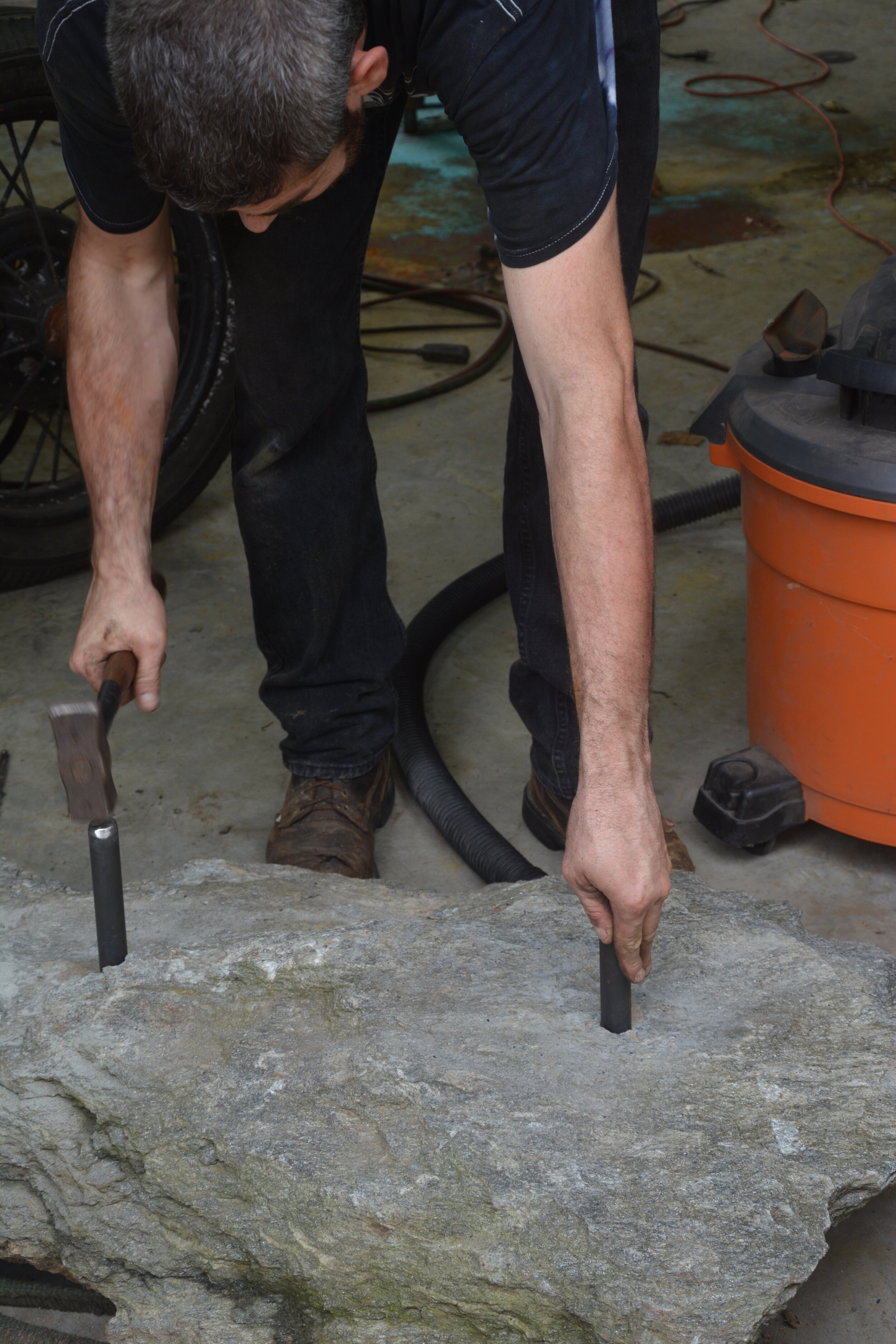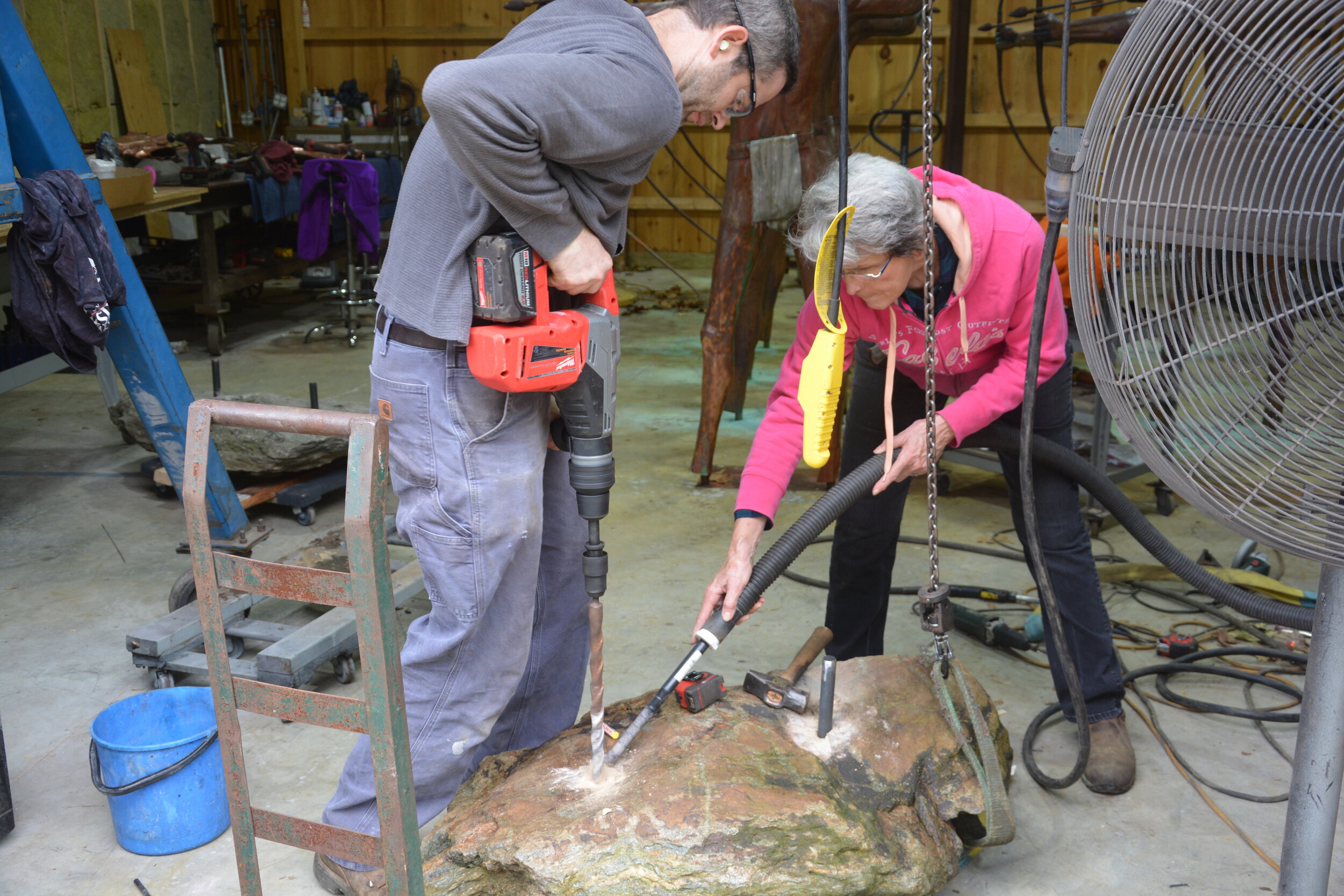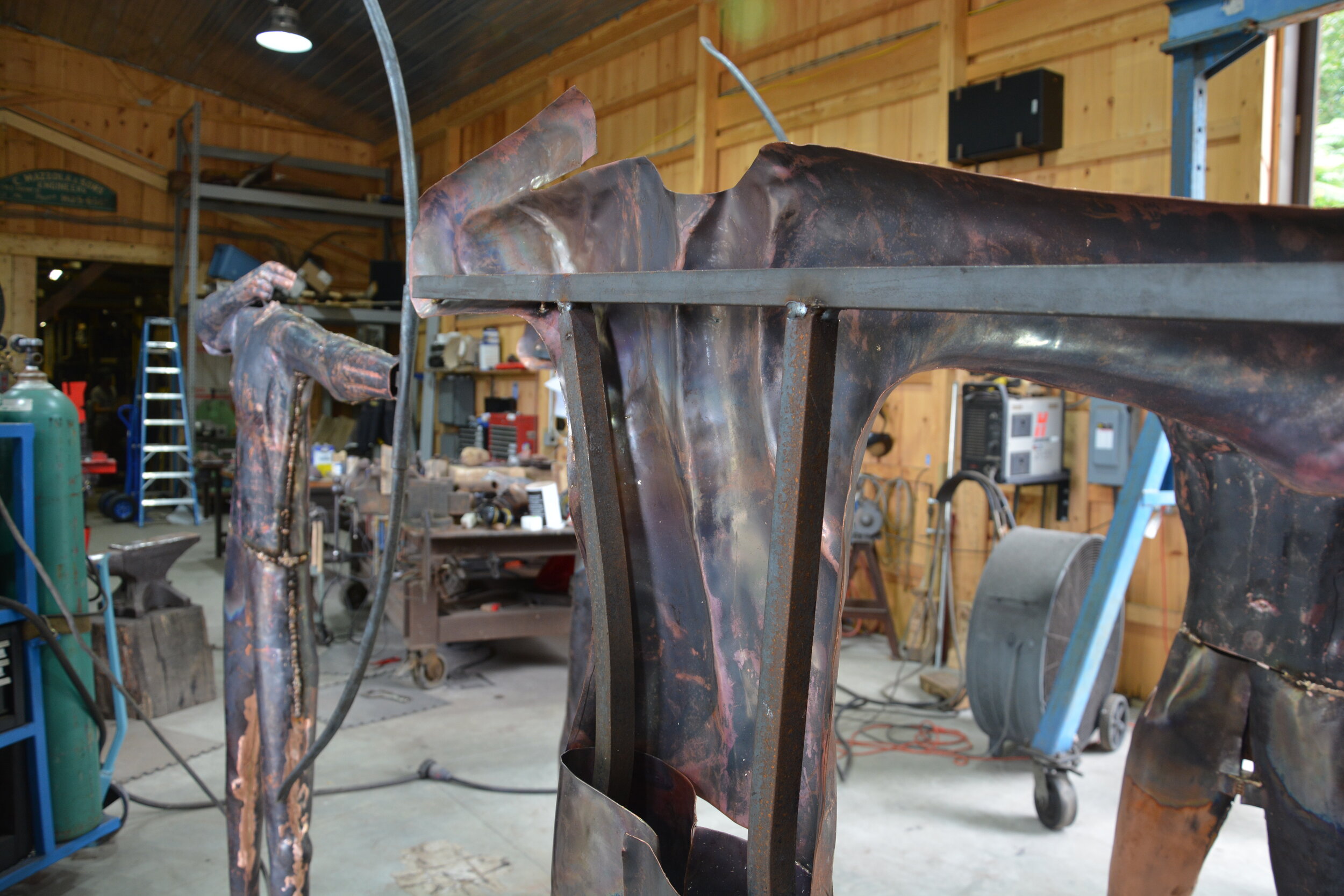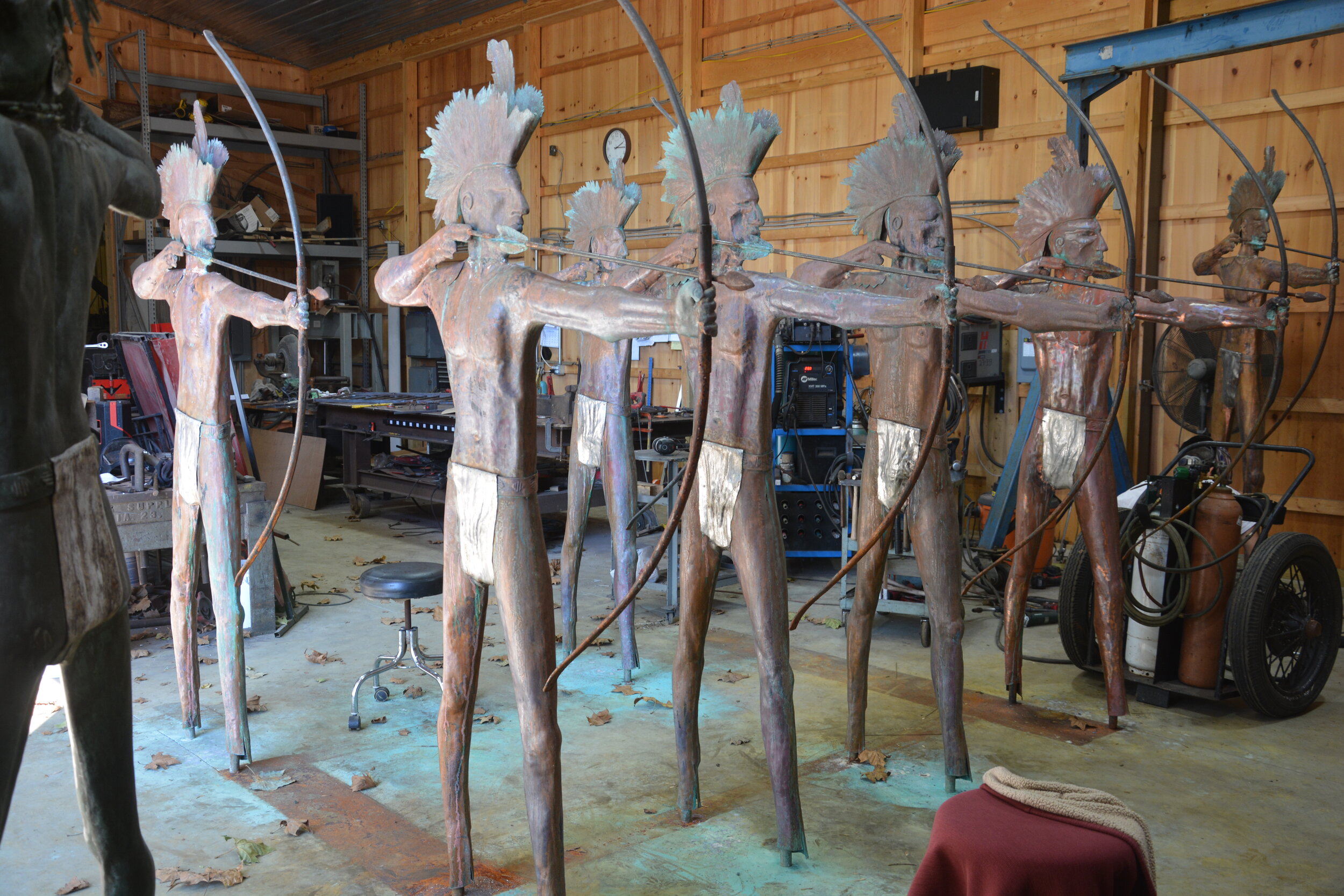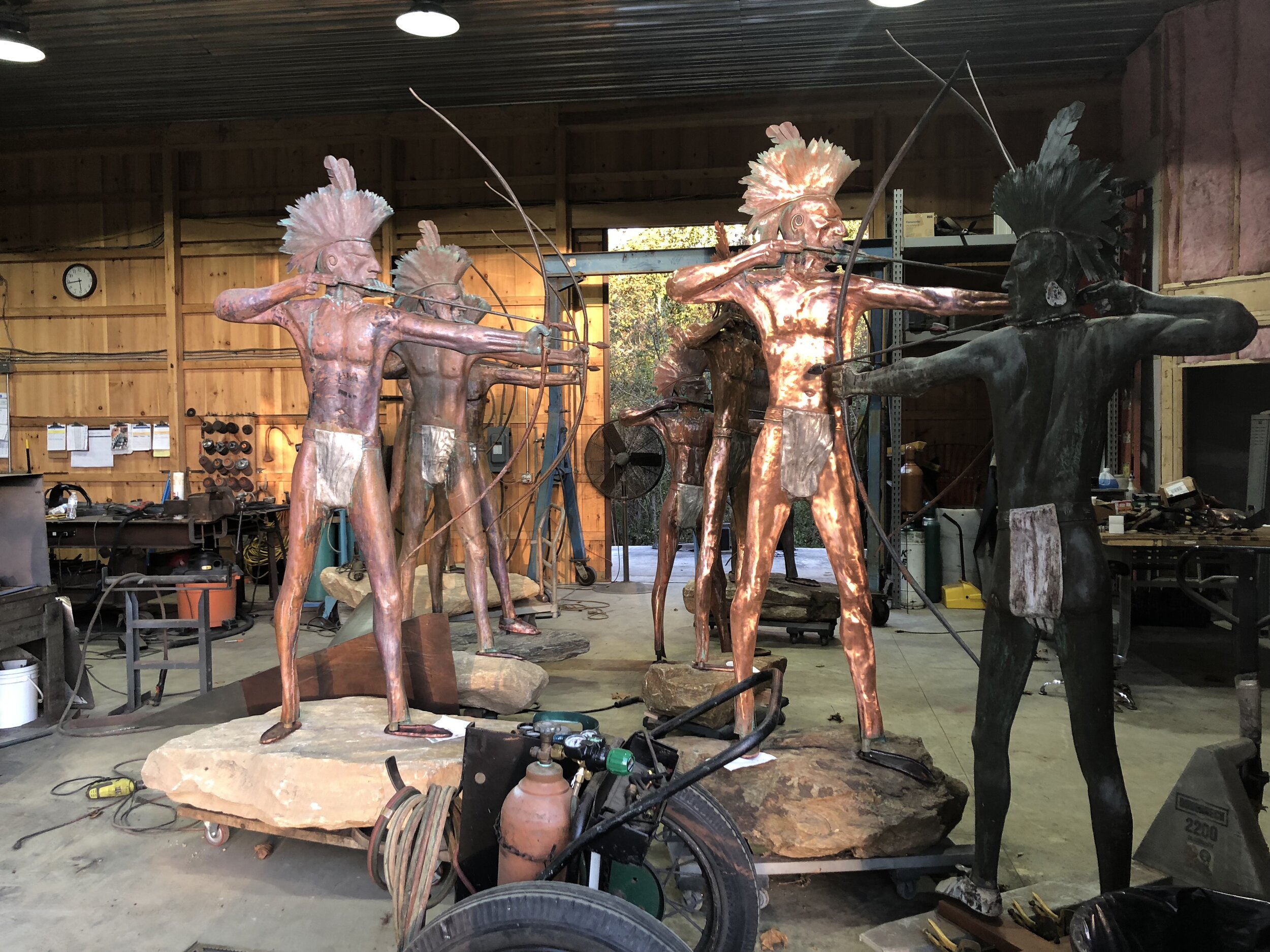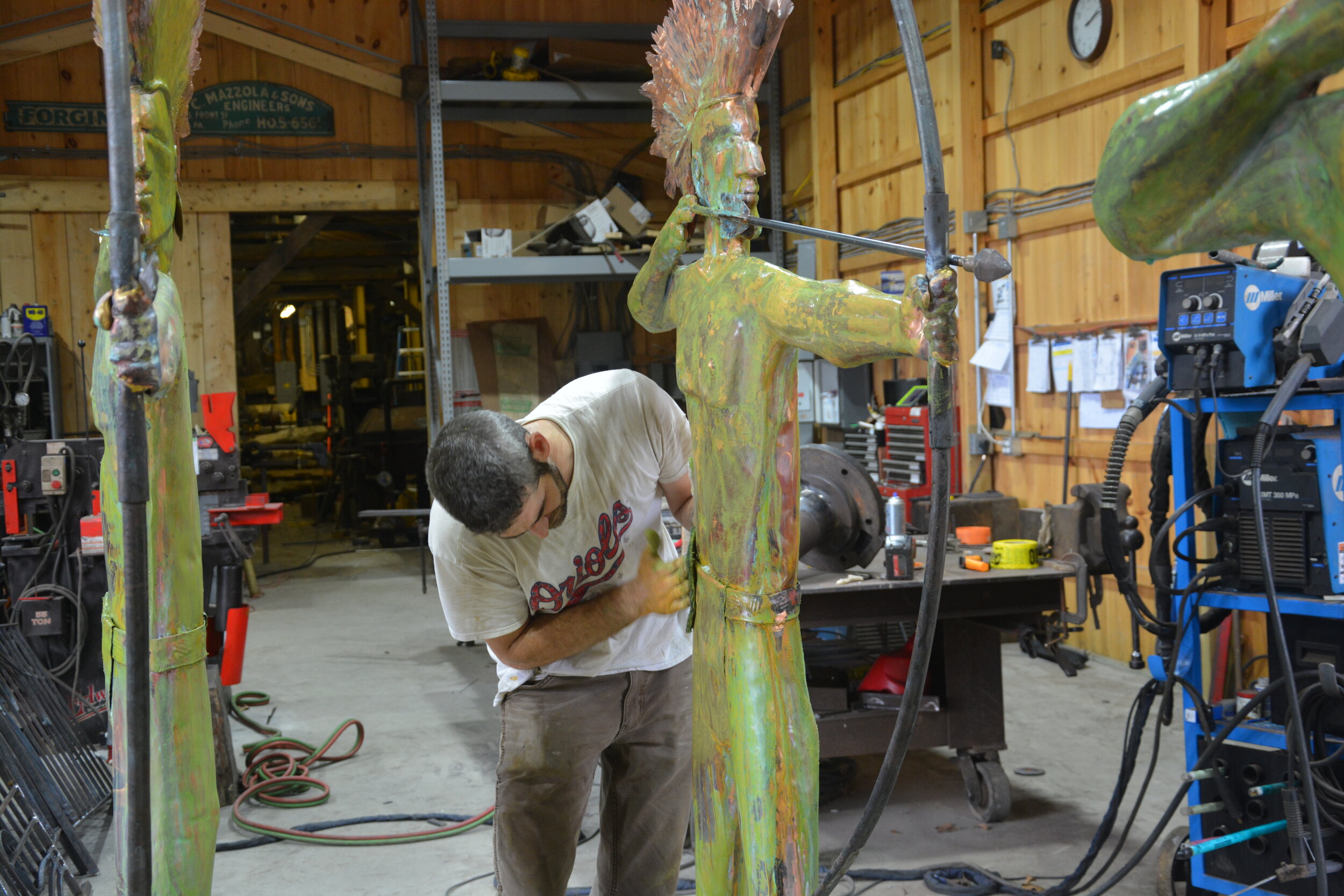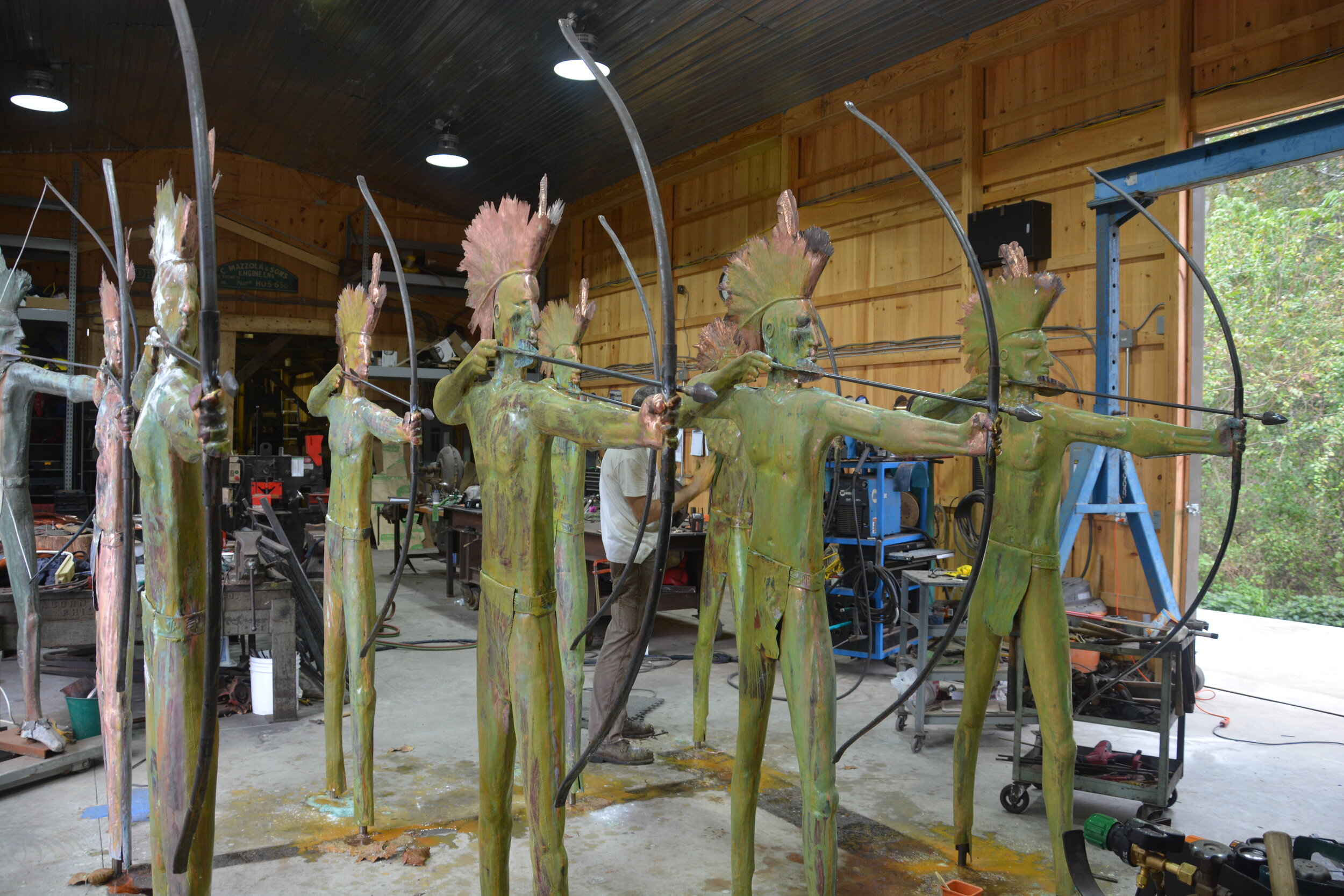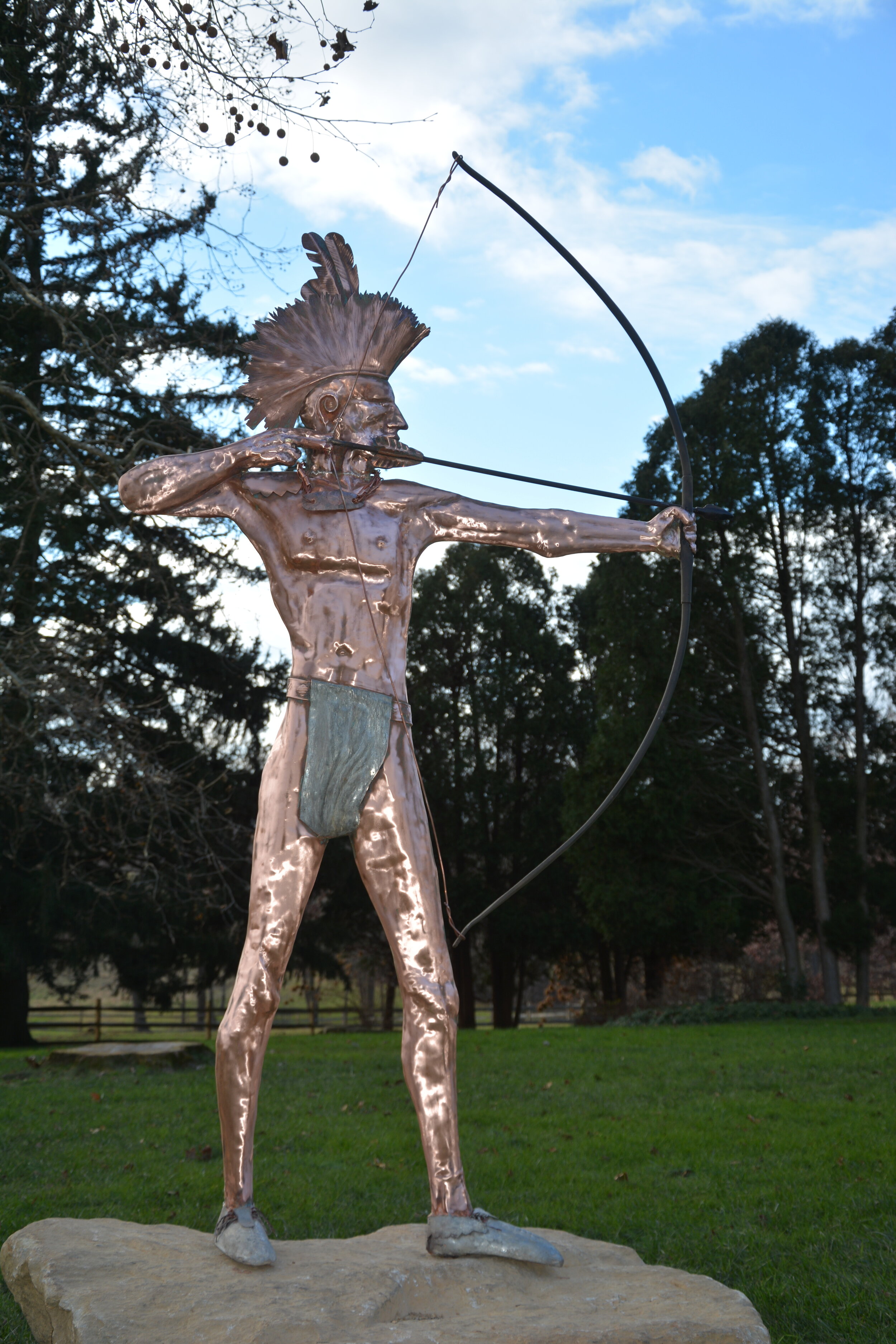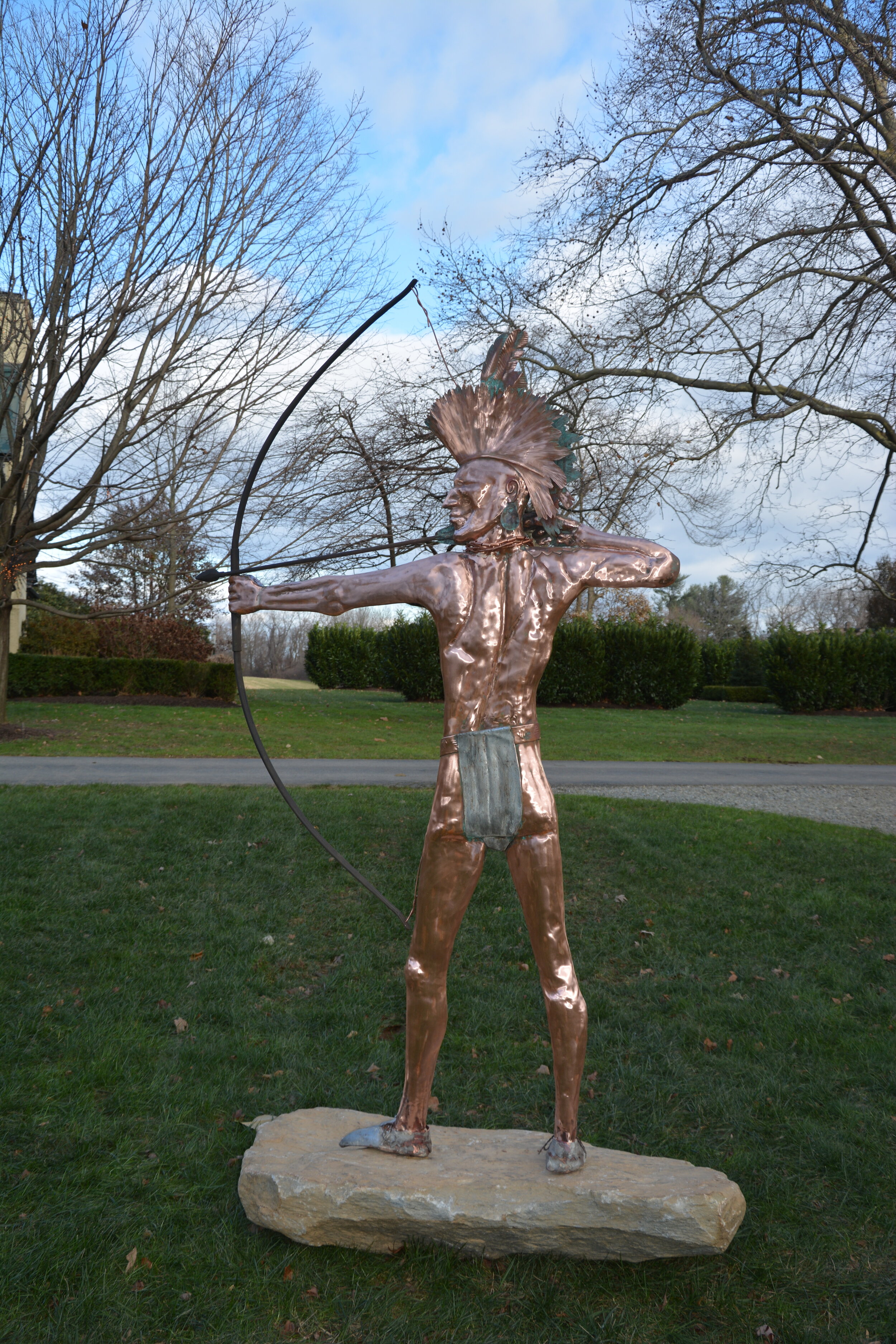Lenni
“Can you replicate Frank Schoonover’s only sculpture for us? Everyone in our family would like one so we will need eight.” We received this request three years ago from a client who wanted us to make eight “Lennis” -a 6’ 6” three dimensional copper Indian whose actual overall height including the bow and arrow is 9’ 8”. Renowned artist Frank Schoonover designed this piece in 1937 after being commissioned by a client who was a friend and familiar with Schoonover’s extensive paintings of native American Indians. The family nicknamed the statue Lenni after the Lenni Lenape Indian tribe.
In preparation for the formation of our reproductions, Matthew researched the construction of the Statue of Liberty and found it to be the same as Lenni. An iron armature framework was formed and clad with hammered copper sheets. The French artist, who created the Statue of Liberty, crafted huge wooden molds which were actually negatives of the shapes he desired. After placing sheets of copper over the molds, they were hammered into the positive likeness needed. We utilized this same approach in creating our Lenni sculptures.
Our challenge came in not replicating one but eight full size statues. A painstaking plan was devised. We would form negative wooden molds of the head, torso, arms, legs, and moccasins. Bandsawed copper pattern pieces were then hammered into the wooden molds. Each mold was created by power carving out the negative with wood carving bits. Measurements were taken down each extremity using a contour gauge. Templates were then made of each measurement in order to form a custom depth gauge for every inch. Pieces of oak or poplar ranging in size from 1’ to 5’ by 6” thick were thus formed into our molds.
Patterns made from tracing the headdress, feathers, earring, hands, breechclout belt, epaulet, and fletchings were used to cut out the copper on a bandsaw before working into the desired depth and surface effect needing to be duplicated. The bow and arrowheads were hand forged. The original necklace was constructed of copper wire, copper beads , and an iron pendant. We opted for copper for our pendants because of the severe rusting of the iron on the original.
Since the original Lenni stood on a boulder, we went with our clients to a landscape supplier to select the boulders which would allow the best placement of the statue. Making a few of the Lennis even more special, some of the boulders were obtained from their farm.
Steel skeletal frames were created and welded to strips of metal on our workroom floor. Our team then welded each individual piece of Lenni to the frames. Slowly the historic replicas came to life. A total of 123 pieces make each Lenni who he is today! Aside from fronts and backs, several components had more than two pieces. For example, the breechclout belt is comprised of seven parts, each moccasin has six parts, the bow and arrow have eleven parts, the necklace is comprised of 60 pieces, and the bust comes to life with sixteen total items.
Once fully constructed, Matthew tinted the breechclout to a light gray using solder. Historically tinting was done to prevent rusting; however, we did it to attain a color differentiation. Lenni himself was cleaned with pickling salt to insure all surfaces would achieve a more uniform patina.
Interesting statistics show 0.5 lbs. of lead solder, 5 lbs. of silicon bronze, 50 lbs. of steel, and 100 lbs. of copper weigh in for each Lenni. 32 hand carved wooden molds came from 500 lbs. of oak and poplar.
Natural patina beginning to develop beautifully.


